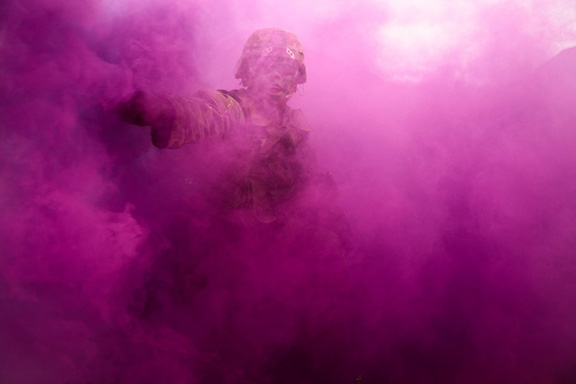Inhalation injuries may occur in military populations after harmful chemical materials are inhaled following a blast event, causing burns to the respiratory system. These injuries can impair lung functions, including oxygen exchange and mucus clearance that require accurate and prompt diagnoses, as damage/injury can progress rapidly from edema to acute upper airway obstruction.1 A standard technique to evaluate these inhalation injuries is the bronchoscopy, which examines the upper airways to identify mucosal injury severity; however, the results can be limited as bronchoscopy only examines the larger upper airways. In inhalation injuries, there may also be damage to the distal airways, which would be assumed from proximal findings.1
This study1 examined the associations among mucosal inhalation injury severity, clinical presentation, and associated outcomes (e.g., development of acute respiratory distress syndrome, prolonged intensive care unit stays, mortality rates, etc.). Study participants consisted of Warfighters that sustained inhalation injuries while deployed in Afghanistan, Iraq, or Syria between 2001 and 2018. Injury data were collected from the Expeditionary Medical Encounter Database1 and grouped using their initial bronchoscopic abbreviated injury scores (AIS) into either low-grade (AIS=1), moderate-grade (AIS=2), or high-grade (AIS=3 or 4) injury categories. The AIS classifies inhalation injury severity based on bronchoscopy findings.
The authors1 determined that there were no differences between injury grade and injury type (e.g., battle as compared to non-battle; blast compared to non-blast); however, there were differences in mortality among the injury grade groups. When Warfighters sustained high-grade injuries, there was a higher chance of death. The authors1 concluded that more research is necessary on this topic, particularly as the study results were inconsistent with previous literature. For the best mortality outcomes, they recommend that interventions occur as quickly as possible post-injury. For example, if prolonged intubation after any type of injury is anticipated, early intervention (e.g., tracheostomy) is recommended to decrease mortality and hospital stays, and improve other long-term health outcomes. Measuring damage to the respiratory system may benefit the Warfighter as options for treatment and quality of life increase.

1 Coulter MJ, Mickelson RC, Dye JL, Shannon KB, and Ambrosio AA (2021). Serious Inhalation Injuries from Military Operations in Afghanistan, Iraq, and Syria. Journal of Intensive Care Medicine. doi: 10.1177/0885066620956618.
The author(s) disclosed receipt of the following financial support for the research, authorship, and/or publication of this article: This work was supported with resources provided by the U.S. Navy Bureau of Medicine and Surgery's Wounded, Ill, and Injured Program, Work Unit No. 60808.
Your 15 minute session will timeout in approximately 10 minutes.
If you're in the middle of entering information, please close this warning and save your progress (if possible) or finish up your task.
If your session fully times out, you will lose any un-saved work.
Your current Blast Injury Research Program session has expired.
Your next click will take you away from the private area, and you will lose any work you have in-progress.
Please enter your email address, and try again.